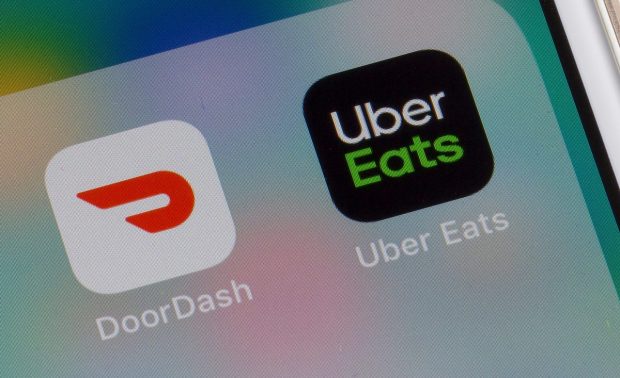Uber Eats Prioritizes Unit Economics as DoorDash Focuses on Reach

In the race between aggregators, Uber Eats is prioritizing profitability while DoorDash is eyeing geographic growth.
The delivery service may not be able to compete with United States category leader DoorDash’s geographic reach, but what it does have is the entire cross-vertical Uber user base at its disposal.
“For us in delivery, we’re benefiting from the power of the platform, very cheap audience from our rides business,” Uber CEO Dara Khosrowshahi told analysts on a call Wednesday (Feb. 8) discussing the company’s fourth-quarter 2022 financial results. “Remember, we get more new Eaters from our rides app than we do from Google and Facebook and Instagram combined at about a quarter of the cost. So, that is a very significant structural advantage that is assisting our delivery business.”
Indeed, the aggregator seems to be focused more on optimizing unit economics in the near term than on growth down the line. The company shared in a presentation that the profitability of its U.S. and Canada delivery business increased eightfold year over year and eighteenfold in the rest of the world.
As such, adoption-wise, DoorDash remains in the lead in the U.S. Research from PYMNTS’ study “The Digital Divide: Regional Variations in U.S. Food Ordering Trends and Digital Adoption,” which drew from a survey of more than 2,500 U.S. consumers, found that 71% of aggregator customers use DoorDash, and a significantly lower 48% use Uber Eats.
This preference for DoorDash comes amid the San Francisco-based delivery service’s consistent, strong performance across a range of key factors. Data from the latest edition of PYMNTS’ Provider Ranking of Aggregators, which ranks key players around the world based on factors including channel coverage, up-to-date downloads, monthly average users, sessions per user and average session length, found that DoorDash has a nearly perfect score of 98. Trailing DoorDash in second place, with a score of 90, is Uber Eats.
For one thing, DoorDash has made major inroads in the suburbs, which are overlooked by most leading aggregators, given that delivering in densely populated urban areas enables them to complete more trips in less time, while suburban and rural deliveries can be more costly.
Yet for years, DoorDash has been going after this demographic anyway. The company most recently discussed its continued strength in these underpenetrated regions on its second-quarter 2022 earnings call last summer, after being asked whether it was facing “any pressure from competitors in nonurban markets.”
“So far, we haven’t seen an impact [from] recent competitor announcements or moves to invest in certain types of geographies versus other types of geographies in the numbers,” said CEO Tony Xu at the time.
Indeed, the suburbs remain underpenetrated when it comes to on-demand delivery. Take, for instance, grocery ordering. Findings from the November/December edition of the ConnectedEconomy™ study “ConnectedEconomy™ Monthly Report: The Gender Divide Edition,” for which PYMNTS surveyed more than 2,600 U.S. consumers, showed that 62% of men and 47% of women in urban areas use same-day grocery delivery aggregators such as Instacart. In contrast, about half that share — only 34% of men and 24% of women in the suburbs said the same.
